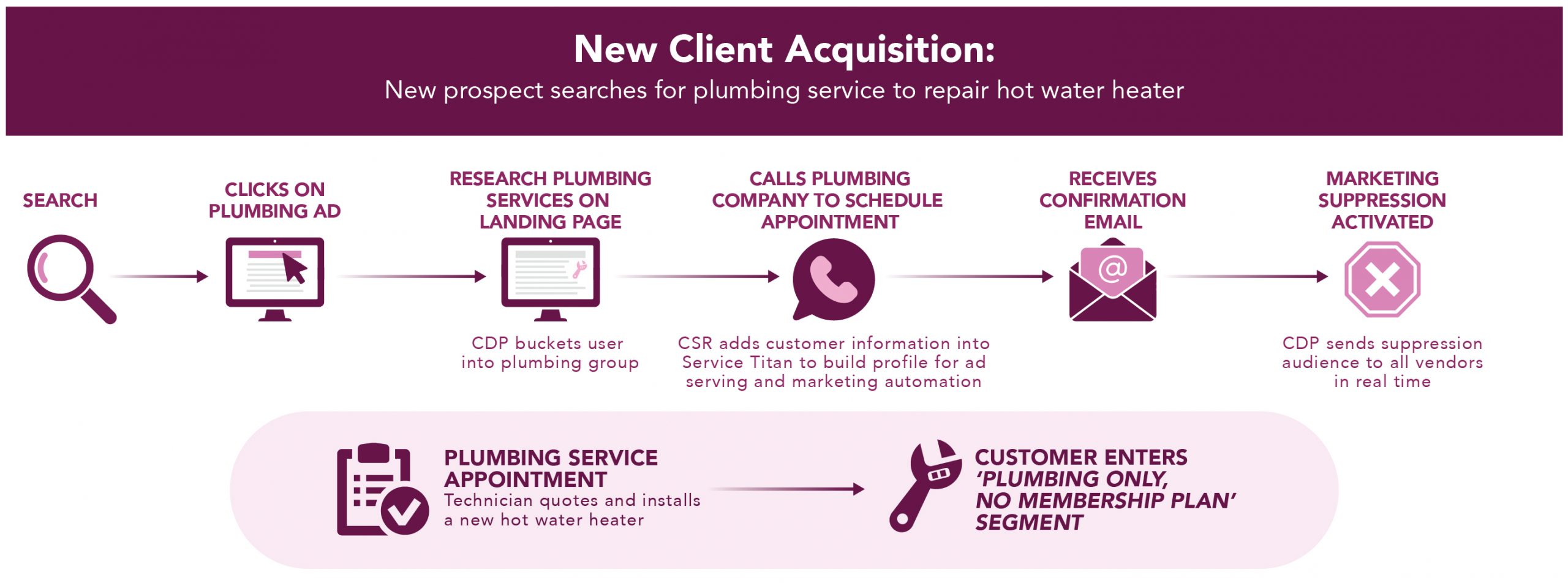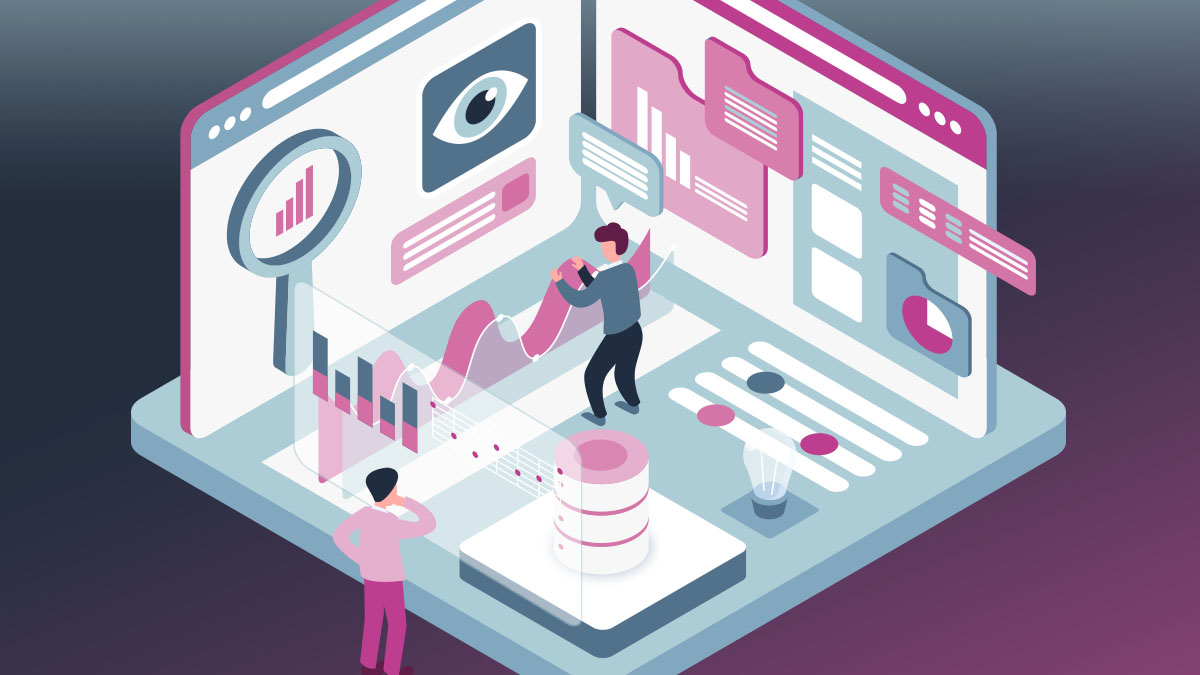With the rapid evolution of big tech and the evolving emphasis on the customer journey, a Customer Data Platform (CDP) has never been more important to your business’s customer data strategy. Marketing trends and consumer behavior make it clear that traditional marketing strategies and tactics will not be nearly as effective as they once were. Brands serve a wide range of customers, and each interaction is a unique, valuable data point to your business. So, what can your company do to maximize customer loyalty, personalize brand interactions, and increase revenue opportunities? The answer lies within the capabilities and value of a CDP.
You Are Behind if You Aren’t Using a CDP
You can learn a lot from how and when a customer interacts with different components of your business. If you are not centralizing and operationalizing this rich data to inform your marketing efforts, you are likely missing out on revenue opportunities. Customers may interact and find your business in a variety of ways. Some prefer submitting contact information online, some prefer calling the number listed on your website, some might use a Google Ads call extension, the list goes on. By definition, a CDP is software that aggregates and organizes data across various customer touchpoints, creating a centralized place to collect and enrich customer data before passing it downstream to marketing channels Customers expect personalized interactions with your brand, and you expect a solid customer data strategy leading to revenue growth, so a CDP sits at the intersection of these two expectations.
Unify Your Customer Data in A CDP
There are numerous ways customers find and interact with your brand. Your website analytics and Customer Relationship Management (CRM) system houses a ton of granular data that can tell you a lot about the how, what, and when customers found your brand and engaged with you. The inherent challenge many companies face is keeping a singular view of customer data that is understandable, actionable, and reliable. A website and CRM are both critical elements to the success of a business and they both offer incredible insights on your customers. These rich data sources are almost meaningless if you cannot understand and take action on that customer data. This is where a CDP plays an important role in your customer data strategy. It centralizes and democratizes all your customer data and acts as an API hub to pass customer segments to a variety of vendors and platforms in real-time.
The key to data unification in any CDP is a Visitor ID. A primary Visitor ID is usually a hashed email or another reliable and durable contact ID, address, secondary Visitor IDs can include names, phone numbers, customer IDs, etc. The key to selecting a primary Visitor ID is ensuring it is strong and not likely to change over time. An email address is a perfect example of a strong Visitor ID. The Visitor ID unifies your data and ties it back to a single customer. The Visitor ID also allows a CDP to append behavioral insights like website interactions, lifetime customer value, time since last service, product offering affinities, etc.

Utilize a CDP To Understand Your Customer’s Purchase Journey
Once your unique customer data is ingested and unified in a CDP you can begin to understand how, where, and when customers find your brand and what types of actions they have taken to become a customer. The key to mapping and acting on your customers’ journeys is setting up the required data capture building blocks within your CDP. For example, in Tealium’s platform, an ‘Attribute’ can record a unique event level action such as a purchase or number of times a person visited a specific page. There are likely hundreds of event level signals that can offer valuable information about your customers.
There are endless variations customers may take on their journey to making a purchase. Your configured data sources will allow access for a CDP solution to tap into this data. The beauty of a CDP is that you can track and record these journeys in a singular location. Both internal and external data visualization tools will help unlock valuable insights about your top converting customer’s behavior and where you are losing customers. These customer journey insights will allow your brand to personalize messaging based on where they are in their path to conversion, and consequently boost media spend efficiency and drive incremental revenue. Below is an example of a full illustration of one customer journey, and how a market leading CDP solution tracks and acts on these touchpoints.

Maximize Revenue Opportunities with Strategic Targeting and Personalized Messaging
What do you wish you knew about your customers? How would you change your messaging and interactions with customers if you knew exactly where they were in their purchase journey? A CDP can unlock these insights and allow your brand to speak to your customers on a much more personalized level. As mentioned above, a CDP acts as a non-biased and democratized data source to pass audience segments to your marketing vendors. This means you can act on highly valuable audience segments across your entire marketing stack, in real-time. As marketers, we need to ask, “what does this mean for revenue generation?” This approach increases cost savings with ad spend efficiency by suppressing both existing and engaged customers. This strategic targeting alone will prove invaluable savings to your bottom line.
In addition to efficiencies, CDPs offer the ability to present real-time, personalized messaging to marketing vendors tailored specifically to where your prospect is in their journey. This can boost customer retention by creating meaningful, relevant interactions with your brand. An effective CDP implementation can also help your business be proactive in customer communication and engagement efforts.
For example, a customer bought an A/C unit 3 years ago, did not sign up for a maintenance plan, and has had issues with the unit. The customer profile in your CDP illustrates that this customer has visited a maintenance plan page 4 times in the last month, they have looked at an A/C unit information page on your website, and even clicked a “schedule consultation” button, but they abandoned the form. Your CDP can not only pass this information back to your CRM for a sales rep to follow up, but it can activate automated, scalable ads on a variety of marketing platforms in real-time.

Deploy A Well-Planned Data Strategy with A CDP
A customer journey is as unique as each customer’s interaction with your brand and should be treated as such. A CDP will allow you to not only create meaningful interactions with your customers, but it will also have a positive impact on your revenue and position your brand positively in a privacy-centric marketing environment.
